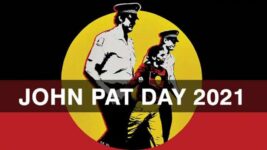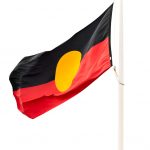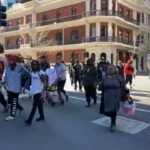First Nations Deaths in Custody Continue, 38 Years After Police Killed John Pat

John Pat was just 16-years-old, when he, and several other First Nations bystanders, moved to intervene in an assault taking place out the front of the Victoria Hotel in the WA town of Roebourne.
The incident involved five drunk off-duty police officers setting upon young Aboriginal man Ashley James.
Onlookers later stated that one of the WA police officers punched Pat in the face, which sent him falling backwards to strike his head on the road. Another officer is then said to have walked over to the Yindjibarndi youth and kicked him in the head.
Pat was subsequently dragged along the ground towards the waiting police van. He was kicked in the head again and thrown in the back. He was then taken to the local police station in the Pilbara region town, which is situated on the land of the Ngarluma people.
Out the front of the station, Pat was dragged along a pathway, before being beaten again. The teenager was then placed in a juvenile cell, where he was found dead an hour later. The date was 28 September 1983.
The death in custody of young John Pat, and the subsequent campaign it sparked, provided impetus for the Royal Commission into Aboriginal Deaths in Custody, which handed down its final report on 15 April 1991, making 339 recommendations, most of which have never been acted upon.

Remembering John
The First Nations Deaths In Custody Watch Committee Inc held the 2021 John Pat Day ceremony of remembrance at Walyalup-Fremantle on 26 September.
The event served to not only remember the teen, but also all those First Nations people who have lost their lives in police or corrections custody.
John’s brother, James Wally, spoke at the ceremony. “I remember the day that John died,” he told those gathered. “He asked me if I wanted anything from the pub when he came back. Sadly, he never came back.”
“My brother never became a man,” Wally continued. “My brother never became a father or a husband.”
The coronial inquiry into Pat’s death commenced in October 1983. The five officers involved refused to testify, but they submitted statements denying that they used excessive force. The men went on to be charged with manslaughter and were later acquitted by an all-white jury in May 1986.
Herbert Bropho also addressed the ceremony to speak about his father’s death in custody. “A lot of the men told me that they treated him like shit,” the Noongar elder said. “At the end of the day, he helped many other black fellas. When he passed no one ever apologised to me and my family.”
The deaths continue
The 30th anniversary of the handing down of the Royal Commission’s final report happened in mid-April this year. On that day, it was understood that 474 additional First Nations custodial deaths had occurred since the document was released.
Indeed, this year alone has seen at least nine First Nations people dying in the custody of either Australian police or within the nation’s prison systems.
Prominent rights activist Gwenda Stanley said, in a recorded message for those commemorating Pat’s death in WA, “John Pat and Eddie Murray were two of the first names we heard – back in the 80s – of Aboriginal people who died in custody.”
“Why are we still hearing them? Why can’t they rest? When will the government give them the justice they deserve?”
The Gomeroi woman went on to outline that although all Australian governments formally accepted the recommendations of the Royal Commission, not a lot of effort was put into actioning them.

Watch committees
Two key recommendations made by the commissioners were number 87, which outlined that arrest should only be used as a sanction of last resort, while the 92nd recommendation maintained that prison should also only be used as a last resort sanction.
Back in 1991, when the report was handed down, First Nations people disproportionately accounted for 14 percent of the national adult prisoner population. However, today, they make up a staggering 30 percent of adults held in correctional facilities.
And considering Aboriginal and Torres Strait Islander people make up less than 3 percent of the continent’s overall populace, it would seem the colonial project continues to be well underway.
“This tragedy is a great sorrow for Aboriginal Australia. And a great shame for all governments in Australia,” Stanley made clear. “There are many specific reasons why this continuing tragedy has not yet been stopped.”
“And many of these reasons can be summarised in a simple but significant phrase: not enough watching has been going on.”
But, according to Stanley, this is about to change, because, right now, First Nations groups are organising to re-establish community-based watch committees to monitor custodial deaths situation, to form relationships with authorities and push for much-needed reforms.







